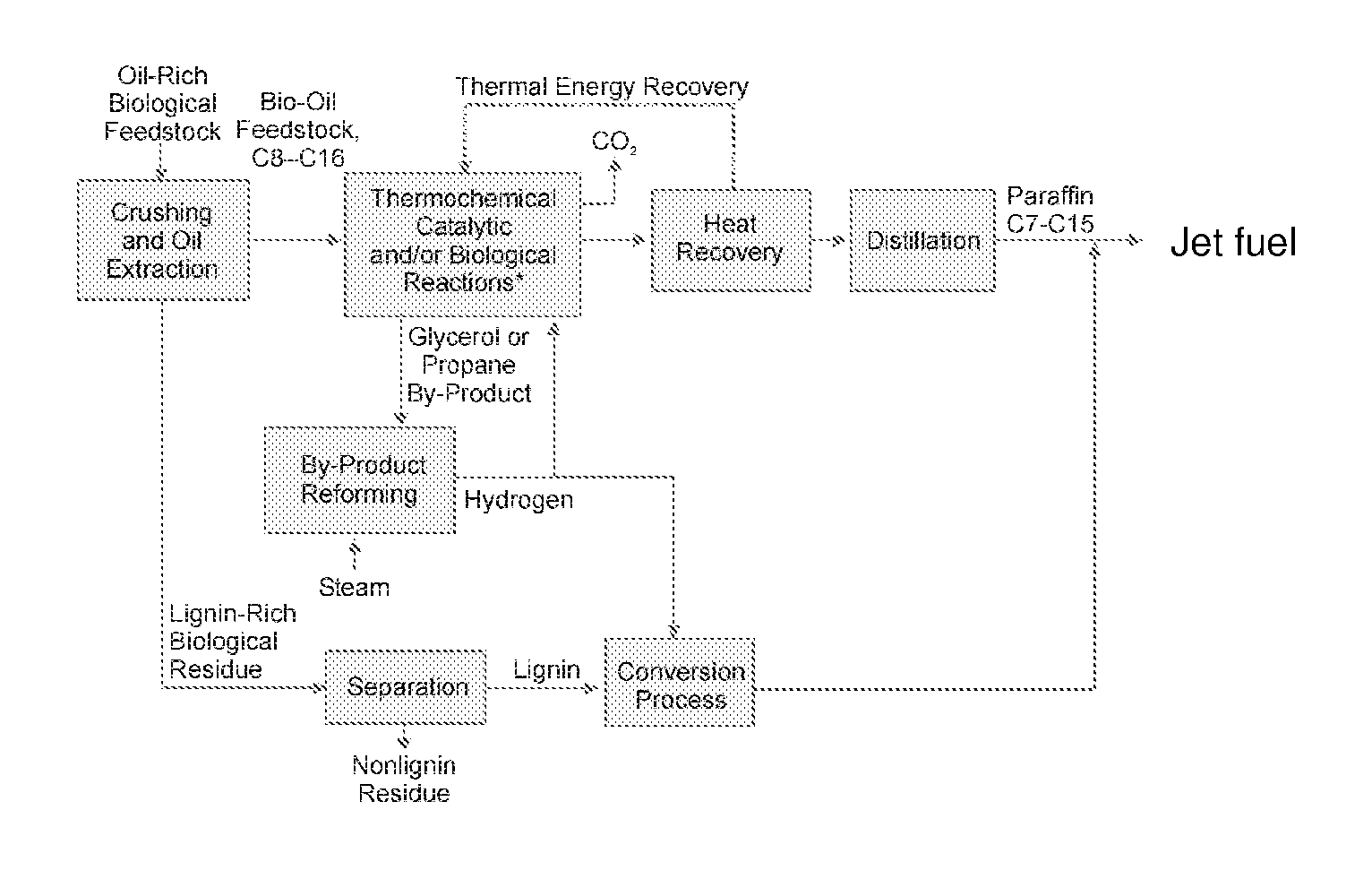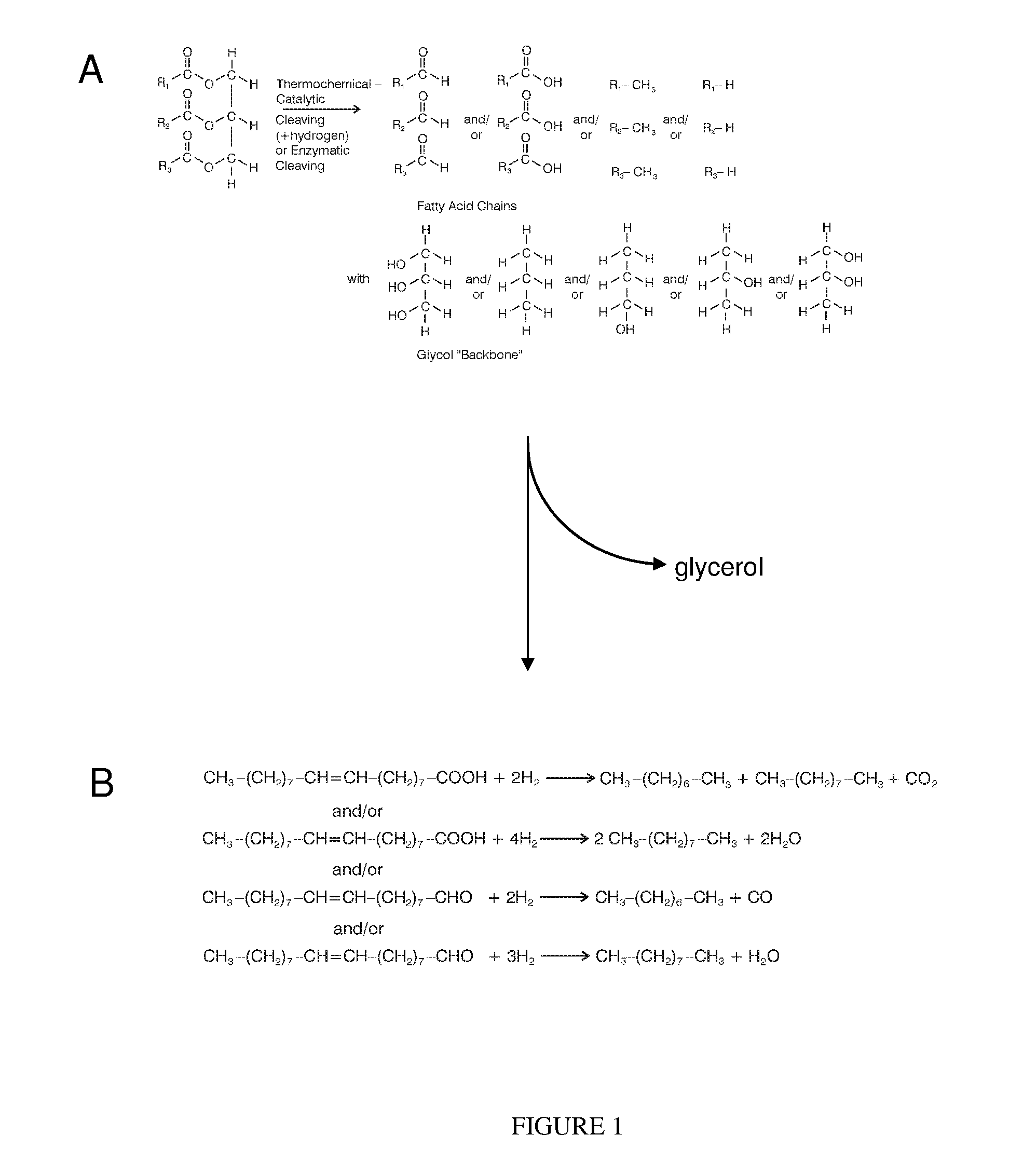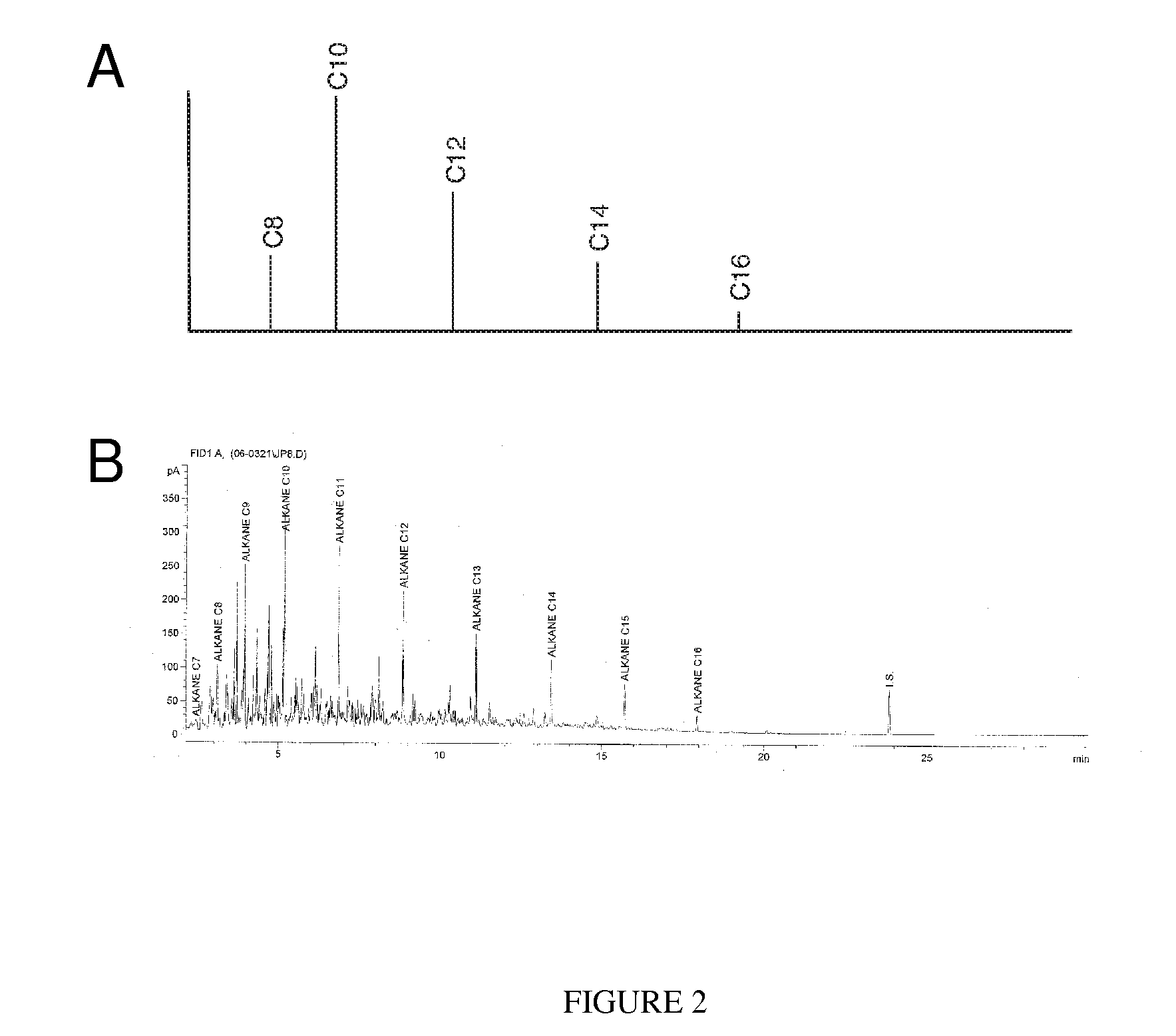Optimal energy pathway to renewable domestic and other fuels
a renewable domestic and other fuel technology, applied in the field of jet fuel production process, can solve the problems of reducing the overall energy efficiency of the process, biodiesel produced by this process typically does not meet transportation diesel requirements, etc., and achieves the effect of preventing the need for high-energy fatty acid chain cracking
- Summary
- Abstract
- Description
- Claims
- Application Information
AI Technical Summary
Benefits of technology
Problems solved by technology
Method used
Image
Examples
example
[0044] A suitable reactor containing reduced catalyst is heated to 300° C. A flow of hydrogen gas is initiated to the heated reactor at a pressure of 100 psig. The hydrogen flow is adjusted to be in excess of that required based upon biooil feed rate and minimum stoichiometric requirements. A natural fatty acid source such as a biological oil is pumped into the reactor while both temperature and hydrogen flow are maintained. The fatty acid source is contacted with the catalyst in the presence of hydrogen. The result is conversion of the fatty acid source to predominantly a normal hydrocarbon product. Some isomerization of the normal hydrocarbon may or may not occur, based upon both the catalyst and support employed. The product mixture is condensed by chilling the outlet line from the reactor and the product is collected in a receiver vessel. The crude product may be subjected to distillation, and the paraffinic product of appropriate boiling point range for jet fuel is recovered fr...
PUM
| Property | Measurement | Unit |
|---|---|---|
| pressure | aaaaa | aaaaa |
| pressure | aaaaa | aaaaa |
| pressure | aaaaa | aaaaa |
Abstract
Description
Claims
Application Information
 Login to View More
Login to View More - R&D
- Intellectual Property
- Life Sciences
- Materials
- Tech Scout
- Unparalleled Data Quality
- Higher Quality Content
- 60% Fewer Hallucinations
Browse by: Latest US Patents, China's latest patents, Technical Efficacy Thesaurus, Application Domain, Technology Topic, Popular Technical Reports.
© 2025 PatSnap. All rights reserved.Legal|Privacy policy|Modern Slavery Act Transparency Statement|Sitemap|About US| Contact US: help@patsnap.com



